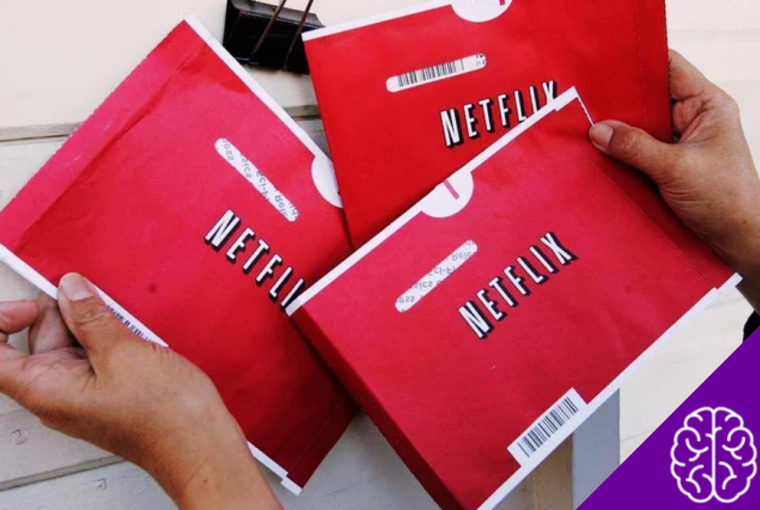What if we told you one of today’s leading entertainment giants started as a small DVD rental business? Yes, we’re talking about Netflix—a company that transformed how we consume TV shows and movies.
But how did a simple DVD rental idea turn into a global streaming service with over 238 million subscribers? This post dives into the fascinating history of Netflix, revealing how two entrepreneurs revolutionized the entertainment industry.
The Beginning: A Late Fee Sparks an Idea
The story of Netflix begins in the late ’90s, an era dominated by physical movie rental stores like Blockbuster. Reed Hastings, one of Netflix’s co-founders, found himself frustrated after being charged a $40 late fee for returning a copy of Apollo 13. That moment planted an idea in his mind—there had to be a better way to rent movies. Together with Marc Randolph, a serial entrepreneur and friend, Hastings set out to create a new kind of movie rental business.
The DVD Revolution
The same year Reed Hastings and Marc Randolph began brainstorming, DVDs were entering the market as a replacement for VHS tapes. DVDs were small, lightweight, and much easier to ship, making them the perfect medium for a mail-order rental service. Recognizing the potential of this emerging technology, Hastings and Randolph saw an opportunity to disrupt the rental industry.
With this timing on their side, they launched Netflix in 1997 in Scotts Valley, California.
How Netflix Worked Initially
Netflix started as an online DVD rental service. Customers could browse a catalog of titles on the company’s website and rent DVDs, which were shipped to their homes in red envelopes. Sounds simple, right? But there was a twist—Netflix charged no late fees, a major frustration for rental customers at the time and a revolutionary business decision that attracted attention.
Subscription Model
Initially, Netflix operated on a pay-per-title model, where users paid for each DVD they rented. However, in 1999, they introduced a subscription model, allowing customers to rent an unlimited number of DVDs per month for a flat fee. Customers could keep the DVDs as long as they wanted and simply return them to receive their next rental. This approach eliminated late fees entirely and enhanced customer satisfaction.
This shift to a subscription model laid the foundation for Netflix’s future as a streaming service.
Early Struggles and Competition with Blockbuster
Netflix’s early years were challenging. Although the subscription model gained traction, the company operated at a loss for years. Meanwhile, industry giant Blockbuster was thriving, with over 9,000 stores worldwide by the early 2000s.
Interestingly, in 2000, Netflix approached Blockbuster with a proposal to sell the company for $50 million. The offer? Netflix would become Blockbuster’s online division, allowing Blockbuster to take advantage of Netflix’s fledgling technology. However, Blockbuster declined the offer, considering it laughable at the time.
That rejection would later become one of the pivotal moments in Netflix’s history.
Transitioning to Streaming
By the mid-2000s, Netflix had shipped millions of DVDs. But Hastings and Randolph weren’t content to stick with DVD rentals. They foresaw a shift in consumer behavior as internet speeds improved and more people moved online.
Netflix began working on a way to distribute movies digitally, without the need for physical DVDs. After years of development, they launched their streaming service in 2007. With this new feature, subscribers could watch movies and shows instantly from their computers, revolutionizing how people consumed entertainment.
The Decline of DVDs
The introduction of streaming marked the gradual decline of DVD rentals. Although the DVD-by-mail service remained active for years after, streaming quickly became Netflix’s primary offering. By 2009, Netflix had surpassed 10 million subscribers, with streaming content playing a huge role in its growth.
Producing Original Content
Streaming wasn’t the only game-changing move for Netflix. In 2013, the company entered the world of original content production with the launch of House of Cards. The show was a massive success, marking Netflix’s transition from a content distributor to a content creator.
Original programming became a key differentiator, allowing Netflix to offer exclusive titles unavailable on other platforms. From hits like Stranger Things and The Crown to groundbreaking films like Roma and The Irishman, Netflix’s investment in original content solidified its position as a leader in the entertainment industry.
By 2023, the company was spending billions of dollars annually on original programming, demonstrating its ongoing commitment to producing high-quality content.
Challenges and Competition
Despite its success, Netflix has faced its share of challenges. The streaming market is now highly competitive, with platforms like Hulu, Disney+, Amazon Prime Video, and HBO Max vying for market share. Additionally, Netflix lost significant portions of its licensed content as studios like Disney and Warner Bros. launched their platforms.
To address these challenges, Netflix continues to innovate. Whether experimenting with interactive content, gaming, or expanding its international catalog, the company is consistently finding new ways to stay ahead.
Netflix Today
Today, Netflix is a global entertainment powerhouse, available in over 190 countries. With a library of thousands of titles across various genres and languages, Netflix has truly democratized access to quality entertainment.
From a small DVD rental service operating out of California to a worldwide leader in streaming and content production, the Netflix story is one of vision, resilience, and innovation.
What Can We Learn From Netflix’s Journey?
The Netflix story offers valuable lessons for entrepreneurs and businesses alike. Here are a few takeaways from their success:
- Adapt to Change: Netflix’s willingness to pivot—from DVD-by-mail to streaming—ensured its survival and growth.
- Focus on Customer Experience: Eliminating late fees and offering unlimited rentals were decisions made with the customer in mind, earning loyalty.
- Innovation is Key: Constantly exploring new opportunities, like original content production, keeps businesses ahead of the curve.
- Timing Matters: Netflix’s success was partly due to launching at the dawn of the DVD era. Recognizing the right moment to act is crucial.
Netflix’s evolution is not only a testament to the power of innovation but also a reminder of the importance of staying flexible in a rapidly changing world.


